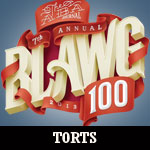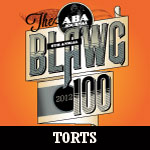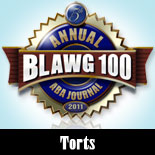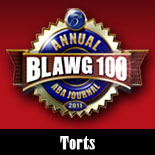
Today, we here at Abnormal Use continue our week-long tribute to My Cousin Vinny with a look at a couple of the film’s actors. Today, we are proud to feature an interview with veteran character actor James Rebhorn, who was kind enough to agree to an interview with our own Jim Dedman late last year. You’ve seen Rebhorn in dozens of movies; often, he plays a lawyer, a judge, or sometimes even, a juror. In My Cousin Vinny, Rebhorn plays George Wilbur, the prosecution’s FBI expert automotive witness who ties the vehicle in question to the criminal defendants played by Ralph Macchio and Mitchell Whitfield. Fun Fact: In 1992, Rebhorn appeared in Vinny with Marisa Tomei, who won the Oscar for Best Supporting Actress, in Scent of A Woman with Al Pacino, who won the Oscar for Best Actor, and in Lorenzo’s Oil with Susan Sarandon, who was nominated for Best Actress for that role. Our interview with Rebhorn, which features his memories of the Vinny filming, his thoughts on playing lawyers on screen, and his memories of prosecuting the “Seinfeld” gang in that show’s series finale, is as follows:
JIM DEDMAN: In 2008, the American Bar Association named My Cousin Vinny third on the list of the 25 greatest legal movies of all time. Why is it do you think that this film has resonated so well with viewers and lawyer viewers in particular over the past 20 years.
JAMES REBHORN: I really think it’s because it’s funny, and I think all of us need to look at our careers regardless of what we’re doing and find joy in them and be able to laugh at them and laugh at ourselves by doing that. And I think My Cousin Vinny does that pretty well. And also I think the legal points that it makes are pretty clear and I think that clarity probably is also one of the reasons why it resonates so much with the lawyer population. But mostly, I think, is because it’s funny and it gives people a good hook into the understanding of the legal system.
JD: Now, you played George Wilbur who is an FBI expert witness on automobiles and tire tread identification.
JR: Right.
JD: How did you become a part of the film and get that role?
JR: Well, it was a situation with the casting director had sent out a casting call to various agents around the country, both on the East and West Coast, and my agent submitted my name, and the casting director asked me to come in, and I auditioned for the casting director and the director, Jonathan Lynn, and the producer, as well, although I can’t remember who was in the room when I auditioned. And it was based upon that audition that they offered me the job.
JD: How did you go about preparing to play an expert witness like Mr. Wilbur?
JR: Well, I just figured I had to know what I was talking about was my preparation. I had assumed that the dialogue in the script was accurate, and so I just embraced that and went ahead and delivered it with authority and confidence.
JD: Fair enough. Now, Mr. Wilbur’s testimony, which is initially offered to convict the two criminal defendants, ultimately turns out to be incorrect or at the very least out of context. What do you think that says about the use of expert witnesses in criminal trials like the one in the movie?
JR: Well, I think it was interesting because – it’s been a while since I’ve seen the movie, and it certainly has been a long time since I’ve done it, but in a way, it was his testimony. It wasn’t that he lied, or even that he covered up the testimony, or even that he softened the edges of what he had to say. It was what he said, in fact, that made it feel compelling, so I think that’s what’s interesting to me, is that if you tell the truth, and if a good lawyer can pick out the most truthful kernel, then that’s what works in a court of law. It’s interesting because I’ve been on a couple of juries in my life. I found it very interesting how lawyers – and I don’t feel like lawyers twist the truth, they just highlight the truth. And that’s what Vinny did in that situation: he highlighted the truth of what I said and put it into the context – a statistical context – that brought into question to veracity or the strength of my testimony. So I think that’s how it worked.
JD: Your scenes were shot in the courtroom.
JR: They were.
JD: What efforts were made to accurately depict the criminal process on set?
JR: Well, there was a lawyer – there was an adviser on set, and I do not recall who that was or how involved he was or she was with everything that was going on. But I know they certainly had somebody on set. And I don’t know in terms of the art direction who the art director or what actual courtroom the art director used as a model for that set. But again, I’m assuming that they pursued it pretty rigorously and found a courtroom that was pretty accurate to that location.
JD: Do you have a favorite moment or memory that sticks out in your mind from shooting those scenes?
JR: Well, it was just great fun. . . . [E]verybody was very relaxed, and everybody really enjoyed it. I don’t have anything real strong stand out – memories of it – but I do remember having a great time.
JD: In your career both on stage and on screen, you’ve played a number of attorneys and judges, and even jurors. Do you prepare for those types of roles any differently than non-legal roles?
JR: . . . [M]ost of what you’re doing [as an actor] is reacting so that dialogue between actors – they feed each other. They kind of build in a scene. But in the case of legal dramas, especially the lawyers, they’re the ones who kind of carry the ball. You know what I mean? So that they have to kind of start the conversation rolling, and they’re the ones that have to tie together the story, so that they’re less playing off of the other characters than sort of generating the scene out of their own minds. In fact, you mentioned Phil Morris in the “Seinfeld,” I was the opposing lawyer in that episode.
JD: That was literally my next question.
JR: That was a particularly challenging job because they didn’t give us a script until the day before we were taping it. In that particular episode, I was really the one who was generating the ball for the whole show. I had to keep tossing it around, and nobody was tossing me anything back. They were just answering my questions. So, when you play a lawyer, I find you really have to depend upon your powers of memorization and retention when you’re a lawyer.
JD: What is it like to be the guy who sent Jerry, Elaine, George and Kramer to jail?
JR: I found it very satisfying.
JD: And you got to square off against Jackie Chiles as well.
JR: That’s right.
JD: Now, you also played juror number 4 in the great play “Twelve Angry Men.”
JR: Yeah.
JD: What can you tell us about your role in that production and what it says about the jury system in America?
JR: Well, I’m not sure what it says about the jury system. It says a lot about where television and movies have gone since then. That was sort of the first major legal drama in the American theater. There have been others, as well, but this was the one – Reginald Rose who wrote it – he then went on to become the producer and head writer for “The Defenders,” and it was sort of the precursor, sort of the template, for all other kind of courtroom legal dramas that followed. Reginald Rose, the playwright, really honed his craft very well with that play. . . . [I]t was for me much more interesting as an actor than it was sort of as a mirror of the legal system . . . [It was] so interesting for all of us because it was really a one scene play. And I don’t think any of us have ever been in a one scene play, where we all come on at the beginning of the play, and we don’t leave until the play is over. That made for an interesting challenge for all of us. And memorable – we still get together for reunions, and we still talk about the seven months we worked together, and it was particularly relevant and meaningful to me in my life as an actor. It also certainly tells and interesting story about the jury system, which I’m sure has been replicated in other jury rooms. . . . I refer back again to the time when I was on a jury, and I ended up being the foreman which, you know, is just a matter of chance. And we certainly went through stages of discernment and of discussion that were not dissimilar to what happened in “Twelve Angry Men,” yet the stakes were not as high with a tenant-landlord case, so the stakes are certainly not as high. But there certainly was – going back and forth and trying to lay out the facts in a way that enabled us to come up with what we thought was a just verdict.
JD: You have served on a jury, and obviously, you’ve been in many, many films and programs. Do the acting and legal professions require similar skill sets, do you think?
JR: I think certainly a litigator and an actor – I think they have to have – they certainly have to feel comfortable with words and pitching them in front of a live audience. So I think to that extent, there is a lot of similarity. I also think actors, when they’re given a script, a lot of what they do in developing their work, and in developing and creating their characters is dissecting the cause and effect of that piece. Why do people act that way? Why do people say those things? So to that extent, I think the analytical process is probably also very similar to what lawyers go through.
JD: Of all the legal roles that you’ve played in your career, do you have one that is your favorite?
JR: Well, I supposed in terms of the overall experience, playing the lawyer, the prosecutor Alvin Hooks, in Snow Falling on Cedars would probably be at the top of the list, although all of them have been great fun and great challenges.
JD: Are there any memories that you have from shooting the “Seinfeld” finale that stick out in your mind in those courtroom scenes?
JR: Well, only that as an actor, it was kind of a brutal experience. As I’ve said before, we didn’t get the script until the day before, and I was on the East Coast, and we were filming on the West Coast, so I was dealing with jet lag and all that kind of experience. It was a tough job, because they had never done an hour show before, and it was their last show, and of course, they all wanted to make it TV history. You tape these things in front of a live audience, and we would start in the early evening, and everybody in Hollywood was there, so there was a tremendous amount of pressure to do the job right. But by the end of the evening, and by the end of the evening, I’m talking like 4:00 in the morning, there’s nobody out there, so it was a challenge to sustain that energy and focus throughout the whole thing. Those are the memories I have of the show, but they were all very gracious folks, and they were certainly a lot of fun to work with.
JD: You’ve also played attorneys on two David E. Kelley shows, “The Practice” and “Boston Legal.” What can you tell us about those experiences in playing a lawyer on those shows?
JR: They were terrific. And I would compare them favorable with “Law & Order.” . . . [B]y the time I was playing a lawyer in them, in the history of those shows, they were well oiled machines. You know what I mean? So that everything fit together very nicely, and there was very little waste of time, and everybody knew what had to happen, and that’s always a pleasure for an actor coming into a show as a guest star. When things move smoothly so that you can go ahead and explore and do what you have to do to get your job done.
JD: Getting back to My Cousin Vinny, the director, Jonathan Lynn, studied law at one point during his life. Did he rely on that at all while shooting the film?
JR: I’m certain that he did, although I don’t recall anything specifically that related to his experience and training in the legal field. . . . [I]t’s true of everybody who works in the theater or film or in television – you always bring to the set, to the location, to the stage, who you are. And certainly in his case, he brought to the set who he was. And it certainly, I’M sure, and formed everything he did as a director on that movie.
JD: Have you gotten any response over the years from anyone that’s an expert witness or with the FBI about your scenes in My Cousin Vinny?
JR: I don’t think specifically about my scenes, about my credibility as an expert witness. But I have a lot of lawyers that stop me and say . . . they’ve seen it in law school and they show it at their firm meetings and. . . it apparently has great relevance to the legal world and understanding the judicial system that we have in this country.
JD: As you may know, lawyers are required to do continuing legal education every year and you cannot go to a continuing legal education seminar without seeing at least one clip from the movie.
JR: Now, what do you think? Do you think it’s a pretty accurate portrayal of the legal system?
JD: It really is, quite frankly. And you’re right. There’s some humor there – that’s what it’s designed for – but many, many, many films go the humor route and then abandon realism. But, really, what’s funny about the film, is that so much of it is so real and funny. He probably would have been thrown in jail a little bit earlier.
JR: I would bet. Those kinds of things – the fact that he really hadn’t passed the bar and all this other kind of stuff. That’s a stretch of reality, but I agree with you – it seems to me, what I still like about the movie and what makes it so funny, is that he doesn’t twist anybody’s testimony. He just pursues the flaws in it. And he does it with great skill.
JD: I think, as you pointed out, your character isn’t misrepresenting the truth, he’s come to an analysis and it’s only after new information is given to him that he changes his opinions.
JR: Yeah. It’s really – it’s a wonderful movie, very entertaining movie.
JD: It’s been 20 years since the film was released this March. Looking back, do you have any other thoughts on the film or its place in film or legal history?
JR: It’s certain, I think, in terms of film history, it’s gotta rank as one of the funniest movies ever made. I don’t know where you’d put it in the top 100, but it certainly is well up there. It continues to have resonance. Clearly, we’re talking about a 20 year difference – it clearly has had some impact. I’m glad about that. I’m very proud and happy to have been a part of it.
(To see a full index of our My Cousin Vinny twentieth anniversary coverage, please see here.).






















